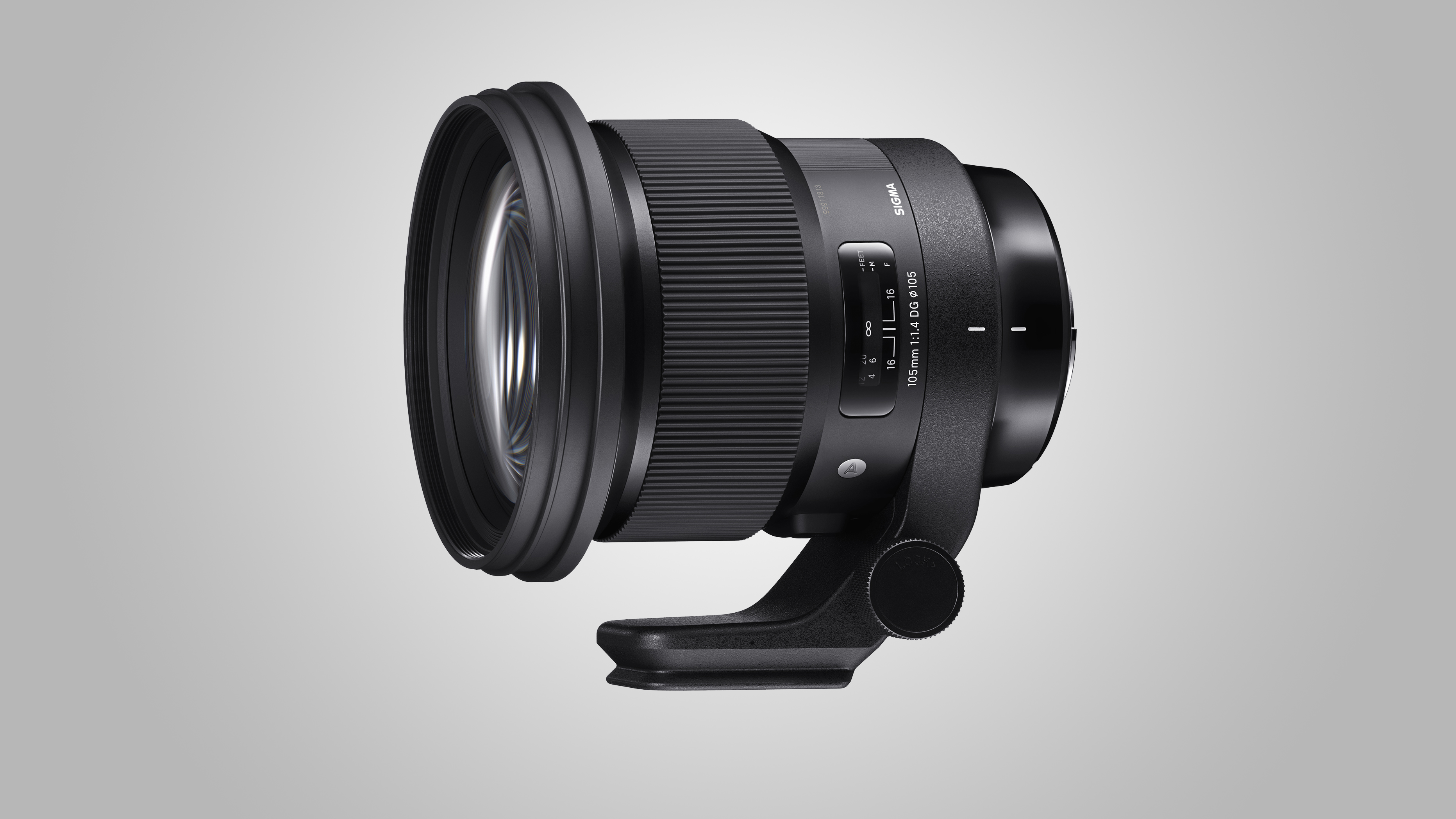TechRadar Verdict
There’s no denying this is a big, heavy lens, but it delivers sumptuous image quality with immense sharpness and clarity, along with beautifully soft and creamy bokeh. For portraiture, it’s spectacular.
Pros
- +
Superb image quality in all respects
- +
Excellent pro-grade build
Cons
- -
Big and heavy for a 105mm prime
- -
Pricey to buy
Why you can trust TechRadar
There’s some stiff competition in pro-grade prime lenses for portraiture, including the Canon EF 85mm f/1.4L IS USM, Nikon AF-S 105mm f/1.4E ED and Sony FE 85mm f/1.4 G Master. Sigma’s recently launched 105mm ‘Art’ lens takes them all on, with a range of mount options that include Canon EF, Nikon FX and Sony E. In fact the Sigma overshadows all of its competitors, at least physically.
Features
- Heavier than most 70-200mm f/2.8s
- Tripod mount has an Arca Swiss compatible foot
- Complex optical path
Nicknamed the ‘bokeh master’, the Sigma is a big bruiser of a lens that measures 116 x 132mm and tips the scales at a weighty 1,645g. That’s heavier than most 70-200mm f/2.8 telephoto zooms and, as such, the lens is supplied complete with a tripod mounting ring. It’s a good-quality item that conveniently has an Arca Swiss compatible foot. Another tell-tale sign of the lens’s size is that the filter attachment thread is an outsized 105mm.
Focal length: 105mm
Mount: Canon EF, Nikon FX, Sigma, Sony E
Filter size: 105mm
Max aperture: f/1.4
Maximum magnification: 0.12x
Dimensions: 116 x 132mm
Weight: 1,645g
Typical of Sigma’s Art line of prime lenses, this one has a complex optical path, incorporating no less than 17 elements, arranged in 12 groups. Of these, there are three top-performance FLD (Fluorite-grade Low Dispersion) elements, two SLD (Special Low Dispersion) elements and an aspherical element. The overall aim is to deliver excellent sharpness across the entire image frame, coupled with very soft bokeh and natural colour rendition. The optical design also aims to minimize sagittal coma flare, helping to maintain a natural circular look for defocused pinpricks of light.
Build quality and handling
- Beautifully engineered
- AF near-silent in operation
- features rubber gasket on the brass mounting plate
Although big and heavy, the lens is beautifully engineered and has a seriously pro-grade construction throughout. The ring-type ultrasonic autofocus system isn’t massively speedy but is very accurate and near-silent in operation. Manual override of autofocus and purely manual focusing benefit from a long rotational travel in the smooth-action focus ring, which enables very precise adjustments.
Unlike with many older Art-line lenses, this one features weather-seals that include a rubber gasket on the brass mounting plate. The lens is supplied complete with a padded soft case and a protective sleeve which you can fit to the barrel in place of the detachable tripod mounting ring. Up-market quality extends to the robust lens hood, which is made from carbon fibre-reinforced plastic.
Performance
- Lens delivers excellent image quality
- Vignetting is noticeable at f/1.4
- Produces fabulously smooth bokeh
True to its claims, the lens delivers excellent image quality in terms of sharpness and contrast. Sharpness is impressive right out to the corners of the frame, even when shooting wide-open. Vignetting is noticeable at f/1.4 but isn’t overly severe, thanks in part to the wide physical diameter of the lens. Distortion is negligible and both lateral and longitudinal chromatic aberrations are very minimal. The latter is often referred to as ‘bokeh fringing’, which can’t be automatically corrected in-camera or during the processing of raw files. As with some other recent Sigma lenses, the Canon-mount edition enables in-camera corrections for lateral chromatic aberration, peripheral illumination and distortion.
Fulfilling its other main promise, the Sigma delivers fabulously smooth bokeh, and the transitional areas between focused and defocused areas within images are impressively seamless. Defocused pinpricks of light are well-rounded across the whole image frame, but can be a little prone to taking on a slight onion ring effect. Even so, it’s a lot less noticeable than from Sigma’s 85mm f/1.4 Art lens, which is the next one down in terms of focal length. When narrowing the aperture by an f/stop or two, the aperture remains very well-rounded.
Sign up for breaking news, reviews, opinion, top tech deals, and more.
Verdict
There’s no denying this is a big, heavy lens, but it delivers sumptuous image quality with immense sharpness and clarity, along with beautifully soft and creamy bokeh. For portraiture, it’s spectacular.
The Sigma beats the rival Nikon AF-S 105mm f/1.4E ED lens for overall build and image qualities, and is considerably less expensive to buy. Canon shooters will have a tougher time choosing between the Sigma and Canon’s own similarly priced EF 85mm f/1.4L IS USM, another excellent portrait lens that adds the bonus of image stabilization. The Canon matches the Sigma for sharpness, but the Sigma edges ahead in the quality of its bokeh.
- Best lenses for Canon full-frame DSLRs
- Best lenses for Nikon full-frame DSLRs
- Best lenses for Sony full-frame mirrorless cameras
- Best portrait lenses
